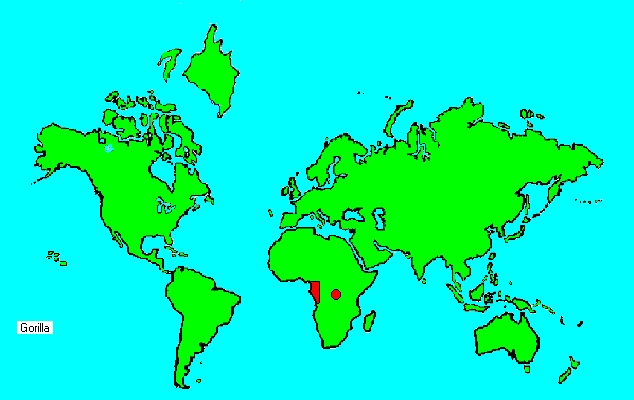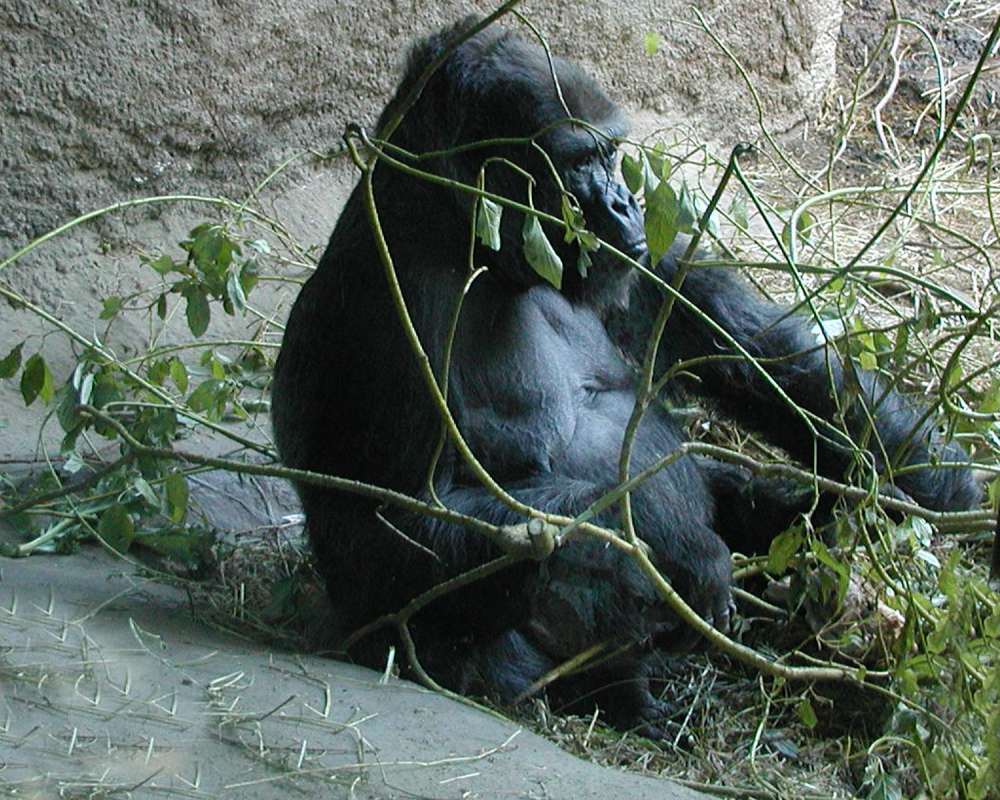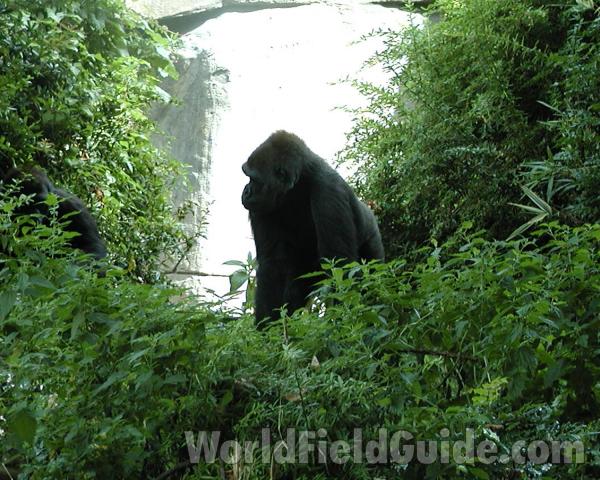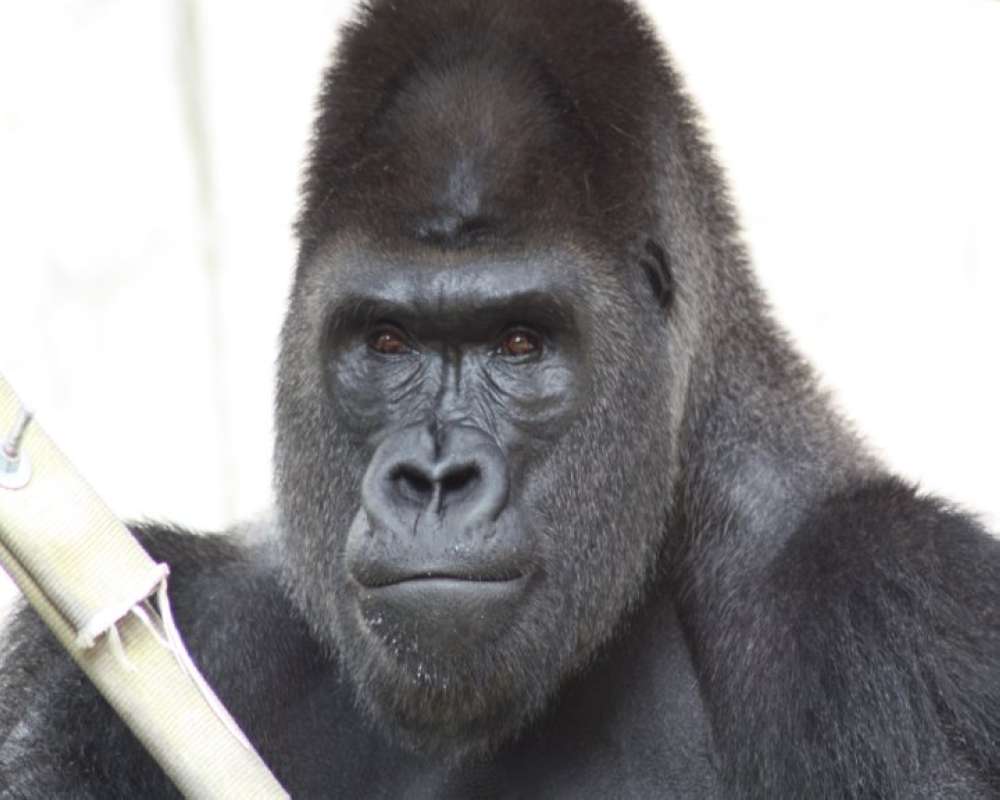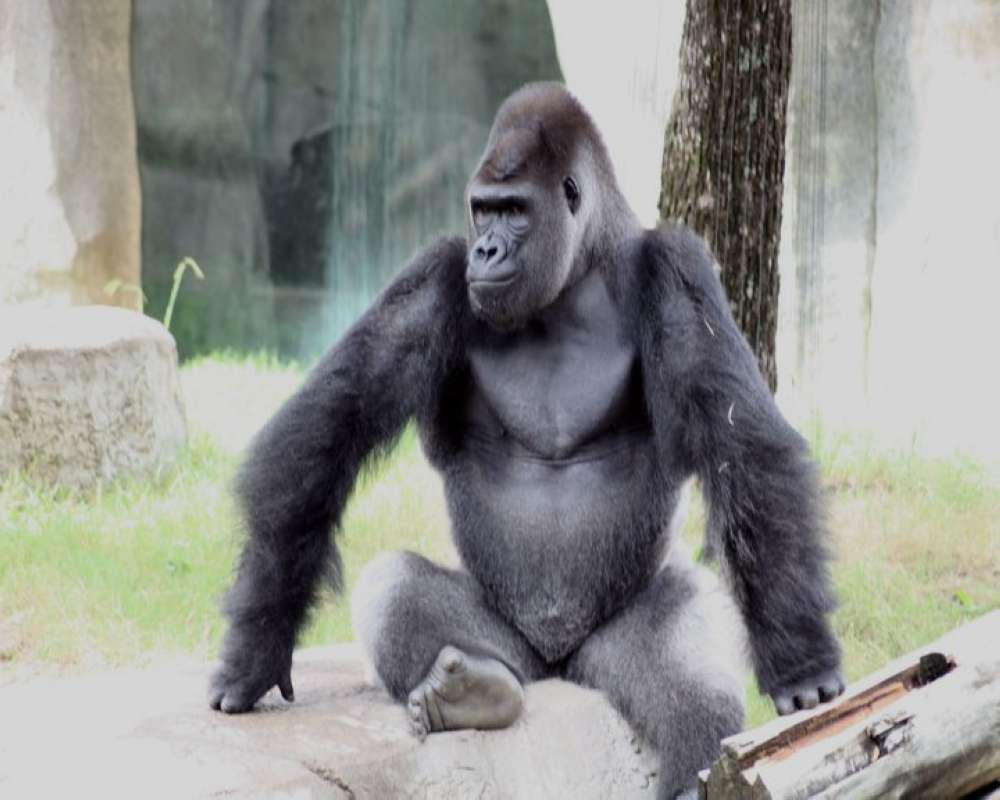SPECIES INFO
Gorilla (Gorilla gorilla) is the largest of the primates. It is found in Equatorial Africa. There are two forms of this gigantic animal.
Species - Location
Lowland - Zaire, Congo, west Africa
Mountain - Uganda, east Zaire
Gorillas are vegetarians and give birth only once every four years. Large examples, usually full grown males, stand about six feet tall, and weigh upwards of 600 pounds and have an armspread of over nine feet. They live on the ground and only the young climb trees. They travel in bands from a few individuals up to as many as thirty or forty. Gorillas are now listed in the International CITES Convention of Endangered Species. Permits are required to move individuals between countries. Much scientific research has focused on the social habits of this very communal and peaceful species.Gorilla (Genus Gorilla) was originally described as a single species. Recently, this has been split into two different species. Each of these species now has an additional recognized subspecies, to make a total of 4 lifeforms in this genus. Gorillas weigh from 200 to 400 pounds. The lifeforms are:
Gorilla beringei beringei - Mountain Gorilla - Congo, Uganda, and Rwanda
Gorilla beringei graueri - Eastern Lowland Gorilla - Congo
Gorilla gorilla gorilla - Western Lowland Gorilla - Angola, Cameroon, Etc.
Gorilla gorilla diehli - Cross River Gorilla - Nigeria-Cameroon Border
All four lifeforms are listed as Sites Appendix I, and two lifeforms (Gorilla beringei) are endangered, and two lifeforms (Gorilla gorilla) are critically endangered. This nomenclature is supported in both the Wilson-Reeder Checklist, and the Redmond Primate Family Tree.
Apes (Family Pongidae) is a limited group of animals containing but six species (gorillas, chimp, pygmy chimp, and the orangutans). The gorilla has been split into two species: the eastern and western. Note that the orangutan has been split into two species: the Sumatran and Bornean.
Some biologists add the Hydrobates and man to this family to create a larger ape family (Hominidae).
The Wilson-Reeder World Check List of Mammals published in 2005 counts 7 species in this family including the genus Homo. They also include 2 chimpanzies, 2 gorillas, and 2 orangutans.
Lemurs, Monkeys, Apes, and Man are combined into the single order of Primates. This order contains about 390 different species. The Wilson Reeder 2005 world check list of mammals lists 376 species. (They did not include the newer order Scandentia of tree shrews with its 20 species.)
Ian Redmond presents a taxonomy tree that involves the order, two sub-orders, several infraorders, several superfamilies, several families, and several subfamilies. We support this complicated and valuable analyses of the primate order. However, our mission is to help identify species, and we have reduced the five intermediate taxonomic levels between order and genus to two levels to facilitate a quick taxonomic drill down.
Mammals (Class Mammalia), together with the birds, are among the youngest of the classes of animals. In species count, mammals number about fifty-one hundred, trailing reptiles (approximately fifty-five hundred), fish (approximately eighteen thousand), and birds (approximately eighty-six hundred).
There are three sub-types of mammals:
monotremes, the most primitive:
Develop in reptilian-like eggs and suckle milk emerging
(i.e., spiny anteater, duckbilled platypus)
marsupials
Newborn emerges very underdeveloped and continue to
mature in a pouch on its mother's abdomen (i.e., opossums,
koala, kangaroo)
placental
Embryo develops within the uterus of the female and is
dependent on a placenta for nutrition and waste removal
(i.e., humans, lions, monkeys)
About sixty-five million years ago, the Tertiary era produced thirty-five orders of mammals. Of this number, eighteen have survived to represent Earth's most diversified as well as its most highly developed classification of animals.
Extinction of mammals is fast becoming a serious issue. Duff and Lawson present a list of forty-one extinct species that reached extinction prior to 1800. These forty-one species are not acknowledged in the counts of the various families. Duff and Lawson also present a list of forty-six species including three gazelles, one zebra, one seal, one deer, and one wolf that have probably gone extinct since 1800. These forty-six species are included in the family counts. Science is adding about forty to fifty new species a year to the list. Many of these are the result of divisions of prior species; some are recent discoveries.
Mammals owe their survival to adaptive capabilities that include the ability to exploit whatever sources of food are available to them, as well as their ability to adjust to various climes. Food specialization influenced evolution to such a great extent that the teeth structure can and has been used to provide extensive information on the food needs and various lifestyles of extinct species.
Despite the vast diversity among mammals in terms of size, habitats and adaptations, they share without exception many characteristics such as:
a. body hair
b. mammary glands
c. certain skull characteristics
d. four limbs that permit speed
e. parallel not perpendicular limbs
f. compartmentalized internal organs
g. a four-chambered heart and pulmonary circulation
Backboned Animals (Phylum Chordata) are the most advanced group of animals on earth. These animals are characterized by having a spinal cord or backbone. Most members have a clearly defined brain that controls the organism through a spinal cord. Fish, amphibians, reptiles, birds, and mammals are in this phylum.
Currently, some taxonomists believe that the fish should be divided into two groups (sharks and regular fishes) and that there are some other primitive groups in the phylum such as hagfish or lampreys.
Animal Kingdom contains numerous organisms that feed on other animals or plants. Included in the animal kingdom are the lower marine invertebrates such as sponges and corals, the jointed legged animals such as insects and spiders, and the backboned animals such as fish, amphibians, reptiles, birds, and mammals.
